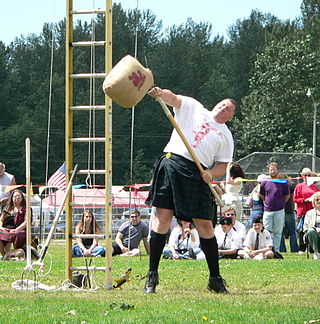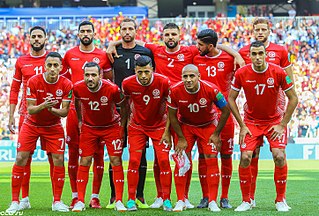Surf music is a genre of rock music associated with surf culture, particularly as found in Southern California. It was especially popular from 1958 to 1964 in two major forms. The first is instrumental surf, distinguished by reverb-heavy electric guitars played to evoke the sound of crashing waves, largely pioneered by Dick Dale and the Del-Tones. The second is vocal surf, which took elements of the original surf sound and added vocal harmonies, a movement led by the Beach Boys.

Big wave surfing is a discipline within surfing in which experienced surfers paddle into, or are towed into, waves which are at least 20 feet high, on surf boards known as "guns" or towboards. Sizes of the board needed to successfully surf these waves vary by the size of the wave as well as the technique the surfer uses to reach the wave. A larger, longer board allows a rider to paddle fast enough to catch the wave and has the advantage of being more stable, but it also limits maneuverability and surfing speed.

The sheaf toss is a traditional Scottish agricultural sport event originally contested at country fairs. A pitchfork is used to hurl a burlap bag stuffed with straw over a horizontal bar above the competitor's head. Typical weight for the bag is 16 pounds. Three chances are given to each competitor to cleanly go over the bar. After all challengers have made their attempts, the bar is raised and all successful competitors move on to the new height. This continues until all but one athlete is eliminated.

Surf culture includes the people, language, fashion, and lifestyle surrounding the sport of surfing. The history of surfing began with the ancient Polynesians. That initial culture directly influenced modern surfing, which began to flourish and evolve in the early 20th century, with its popularity peaking during the 1950s and 1960s. It has affected music, fashion, literature, film, art, and youth jargon in popular culture. The number of surfers throughout the world continues to increase as the culture spreads.

The Football Federation of Chile is the governing body of football in Chile. It was founded 19 June 1895, making it the second oldest South American association football federation, and is a founding member of CONMEBOL in 1916. It supervises of the Chile national football team, Chile women's national football team, Asociación Nacional de Fútbol Profesional: (National Association of Professional Football, originally called Asociación Central de Fútbol, or ACF, and Asociación Nacional de Fútbol Amateur.
The riding of waves has likely existed since humans began swimming in the ocean. In this sense, bodysurfing is the oldest type of wave-catching. Archaeological evidence suggests that ancient cultures of Peru surfed on reed watercraft for fishing and recreation up to five thousand years ago. Standing up on what is now called a surfboard is a relatively recent innovation developed by the Polynesians. The influences for modern surfing can be directly traced to the surfers of pre-contact Hawaii.
Nicolás Rolando Gabaldón was an early surfer who is credited by surfing experts with being California's first documented surfer of African-American and Latino descent at a time when many beaches were segregated and opportunities for minorities more limited than today. Despite being an amateur recreational surfer rather than a professional competitive surfer, he is widely considered a role model for his part in the history of surfing and African American history in the areas of Santa Monica and California.

Football is the most popular sport in Tunisia. It was first introduced by Italian migrants. The governing body is the Tunisian Football Federation.

Mariya Igorevna Gromova is a former Russian competitor in synchronized swimming and a triple Olympic champion and now presenter for Channel One.
Loredana Boboc is a retired Romanian artistic gymnast. She represented Romania at the 2000 Summer Olympics and won a gold medal with her team. She was a member of the gold medal winning teams at the 1999 and 2001 World Championships.
The International Professional Surfing (IPS) organization was the original world governing body of professional surfing that existed between 1976 and 1982. The IPS brought together a loose affiliation of surf contests around the world by forming one world circuit.

Ecuador has many beaches for surfing: the coast of Ecuador is 2,237 km long. Surfable waves are available in Ecuador year-round, and surfers enjoy the mild year-round weather, especially in the northern region where the weather conditions attract many surfers from all over the world. Within this part of South America, Ecuador's neighbors Chile and Peru also offer great surfing. Many surfers in Ecuador use a protective wetsuit. Surf tourism is very important to the local economy, and the beaches offer significant enjoyment because of top quality waves combined with affordable prices for lodging and food compared to other surf destinations. There's also a national marine reserve off the coast, which has a gigantic whale population.
The Kilsyth Curling Club, in Kilsyth, Scotland, claims to be the oldest curling club in the world, being established in 1716.

Surfing in the United States is a popular hobby in coastal areas, and more recently due to the invention of wave pools, inland regions of the country. It contributes to a lifestyle and culture in which millions participate and which millions more have an interest. USA surfing is the governing body for the sport of surfing in the United States, with surf leagues such as the World Surf League available in the country. Surfing can be traced back to 17th Century Hawaii and has evolved over time into the professional sport it is today, with surfing being included for the first time in the 2020 Summer Olympics in Tokyo.

Women's surfing is thought to date back to the 17th century. One of the earliest records of women surfing is of princess Keleanohoana’api’api, also known as Kalea or the Maui Surf Riding Princess. It is rumored that Kalea was the trailblazer of surfing and could surf better than both men and women. A few centuries later in the mid-late 1800s, Thrum’s Hawaiian Annual reported that women in ancient Hawaii surfed in equal numbers and frequently better than men. Over the last 50 years, women's surfing has grown in popularity.
Matt Warshaw is a former professional surfer, former writer and editor at Surfer magazine (1984-1990), and the author of dozens of feature articles and large-format books on surfing culture and history.
Aaron Chang is an American photographer specialized in surfing and ocean photography. He spent 25 years as a senior photographer at Surfing Magazine; he was an early photographer to practice the act of shooting waves with a wide angle lens from the water.

Surfing South Africa (SSA) is the governing body for the sport of surfing in South Africa, and a recognised member of the world governing body, the International Surfing Association (ISA). SSA is also an affiliate of the South African Sports Confederation and Olympic Committee (SASCOC), which, alongside Sport and Recreation South Africa (SRSA) supervises all organised sport in South Africa.
The World Famous Indians were a basketball team that played exhibition games on tour (barnstorming) in the United States during the 1920s. Among their opponents were the Buffalo Silents of Buffalo, New York, a team whose members were deaf and/or mute. The team was based out of LaRue, Ohio. LaRue also hosted the National Football League's Oorang Indians in 1922 and 1923, a traveling team of Native American players that was also led by Jim Thorpe. LaRue was home to Oorang Kennels owner Walter Lingo who sponsored the team to advertise his business selling a select breed of airedale terriers.
Surfing was first introduced in Brazil in the 1970s.










